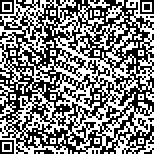| This article has been:Browse 1800Times Download 3598Times |

scan it! |
|
|
| DOI:10.13522/j.cnki.ggps.2021202 |
|
| Estimating Water Consumption from Electricity Consumption: How to Calculate the Conversion Coefficient |
|
FAN Hongmei, LIU Xiaomin, WANG Wenjuan, et al.
|
|
1. School of Water Conservancy and Civil Engineering, Inner Mongolia Agricultural University, Hohhot 010018, China;
2. Inner Mongolia Jinhuayuan Environmental Resources Engineering Consulting Co., Ltd, Hohhot 010020, China
|
| Abstract: |
| 【Background】Agriculture is the largest water-consuming sector in China, but how to estimate agricultural water use is an issue that remains extremely difficult despite its importance in improving water measurement. Considering that moving water for irrigation needs power, an alternative method emerging over the past decades is to estimate it based on the electricity reading on the national grid. The purpose of this paper is to investigate how to estimate the conversion coefficient of this method.【Method】We took Horqin District at Tongliao City in Inner Mongolia as an example. We calculated the conversion coefficient using the multiple linear regression model and the BP neural network model respectively, with the standard average method taken as the control (CK). For each method, the average relative error (MRE), root mean square error (RMSE) and decisive coefficient (R2) were selected as indicators to compare the above models.【Result】The error of the standard average method was 7.40%. In contrast, the relative error of the multiple linear regression model and the BP neural network models was 2.40% and 1.65%, respectively. These results indicated that it is feasible to estimate agricultural water consumption using the electricity consumption read from the national grid. Among the three methods we compared, the BP neutral network was most accurate for estimating the conversion coefficient.【Conclusion】The MRE, RMSE and R2 of the multiple linear regression model were 0.024, 0.175 and 0.923 respectively, compared with their associated values in the BP neural network model, which were 0.018, 0.131 and 0.957. The BP neural network can thus be used as a robust method to estimate the conversion coefficient in converting electricity consumption to agricultural water consumption. |
| Key words: converting electricity to water; conversion coefficient; multiple linear regression; BP neural network |
|
|